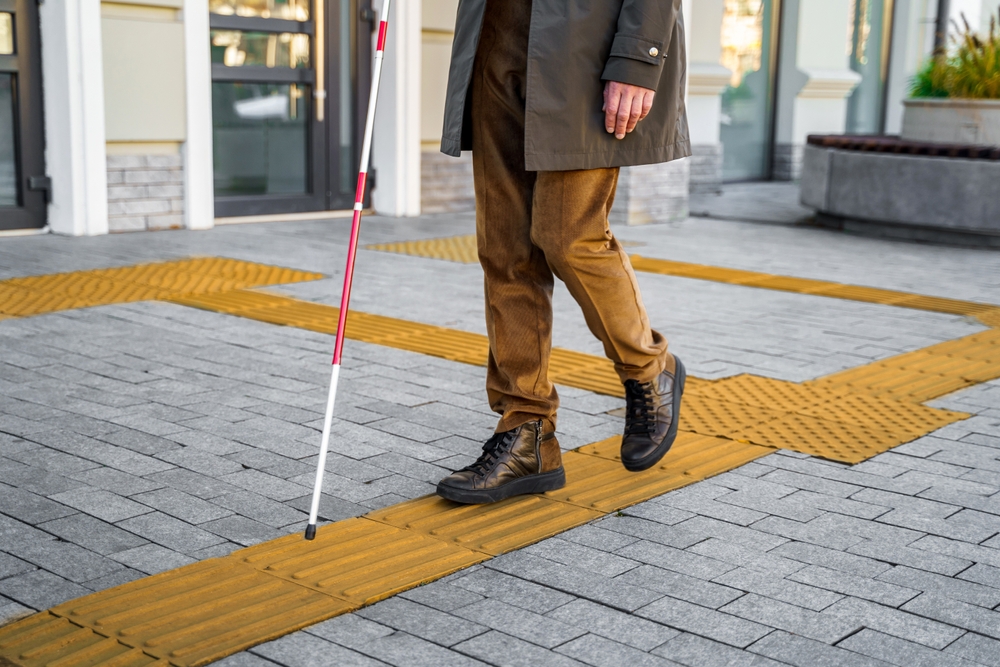
When you have low vision, daily life can be challenging. But there are practical tips and tools to help you adapt and thrive. Let us explore lighting changes, organization techniques, resources, and empowering ideas.
Making Daily Life Easier
Use Proper Lighting
Good lighting is vital for low vision. Adjustments in the brightness and hue of the light source can help manage glare and sensitivity. Using task lighting next to furniture while reading can be helpful. With the proper lighting, daily tasks become easier.
Task Lighting
Gooseneck desk lamps with adjustable arms target light where you need it most. Combined with overall lighting adjustments, task lighting reduces eyestrain. It also boosts comfort and productivity.
Use Contrasting Colors
It is common in low vision to have difficulty detecting detail due to a loss of our contrast sensitivity. Use contrasting color combinations at home and when dressing. Dark dishes on a light tablecloth can help with visibility. Paint the wall behind light switches a bold shade. Contrast makes objects stand out and allows you to view them more easily.
Organize Your Space
Organization helps greatly with low vision. Always put essential items like keys in the same spot. Use bins and dividers to group like items. This system allows your things to be easily accessible.
Label Items
Use large-font, high-contrast labels throughout your home. Systems like Bump dots, tactile labels that are elevated, can be effective to identify the play button on your TV remote or the start button on the microwave for example. Knowing exactly where things are cuts down on frustration.
Helpful Gadgets: Boost Your Independence
Portable MagnifiersHandheld magnifiers enlarge text to reduce eyestrain. Some models have built-in lights or come with stands. Other options can be electronic to adjust the contrast and brightness. Portable options typically fit in purses and bags. Quality magnification opens your world of independence.
Smartphones offer many accessibility options for low-vision users. Turn on magnification to read messages and emails. Use text-to-speech to have words read aloud. Some seeing assistance apps also provide helpful contrast and identification modes.
Enjoy literature and learn new information without eyestrain or frustration. Download audiobooks or explore educational and entertaining podcasts. Reach out to your local library for audio resources. You can discover whole new worlds through audio.
Use small bumps or ridges as tactile cues to identify essential spots at home and work. Mark stair edges and flooring changes with colorful markers to indicate tripping hazards. These signals help with safe navigation.
Confidently Navigate Outdoors
Orientation and Mobility Training
Consider working with a professional for custom orientation and mobility instruction. Specialists teach navigation skills to help an individual move safely and efficiently from one place to another. Everyone’s goals are specific for their environment and desired activities, but typically fall into one of the four main categories of training: human guide, cane skills, non-visual skills, and route planning.
White Cane
White canes can help a person who is blind or visually impaired walk steadily and detect tripping hazards. With training and practice, the cane becomes an extension of oneself. Regain confidence in mastering your community and public transit travel.
Community Resources
Connect with local low vision support groups and advocacy nonprofits. Share experiences and discover services like transportation, training, or mentoring programs. Support fuels empowerment during uncertain times.
Thriving at Work: Key Strategies
Communicate NeedsInform your managers about your visual needs as they change. Colleagues can only help if they are aware. Convey specific accommodations, allowing you to perform optimally. An understanding team means an inclusive workplace.
Many computers and devices offer built-in accessibility features. Enlarge interfaces, adjust color contrast, and use screen readers. Advocate for disability-friendly tech purchases. The right tools remove barriers to full participation.
Discuss adjusted hours, alternative spaces, and layout options to meet your needs and minimize fatigue. Be open about lighting sensitivities requiring relocation. A thoughtful workspace will keep you focused.
With resourcefulness, support, and assistive tools, the path ahead looks bright. Stay positive, embrace new solutions, and thrive. Your identity is far more than vision status alone.
For more vision care tips, visit Beacon Vision Center at our office in Dallas, Texas.
Call (214) 420-5090 to schedule an appointment today.
Vision Rehabilitation | Envision Dallas Vision Rehab Center (envisionus.com)
https://www.allaboutvision.com/resources/human-interest/visual-impairment-a-day-in-the-life/
https://www.webmd.com/eye-health/macular-degeneration/features/lifestyle-changes-geographic-atrophy



